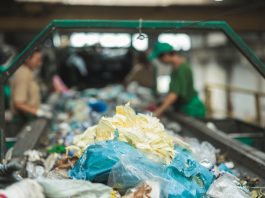Pollution in Europe remains a pressing environmental and public health concern despite ongoing efforts to curb its impact.
The latest reports from the European Commission and the European Environment Agency (EEA) – the Zero Pollution Monitoring and Outlook report and the fourth Clean Air Outlook report – shed light on the progress made in reducing European pollution.
While certain improvements have been achieved, such as declines in marine litter and pesticide use, other forms of pollution, including noise, microplastics, and waste generation, persist at alarming levels.
These findings underscore the urgent need for stronger policies and enforcement to achieve the EU’s ambitious 2030 zero pollution targets.
Jessika Roswall, EU Commissioner for Environment, Water Resilience and a Competitive Circular Economy, explained: “European citizens want clean air, water and soil and safe chemicals so that their health and their environment are protected.
“But also businesses and farmers need a clean environment to thrive. Today, we take stock of our journey towards 2030 zero pollution targets. We are heading in the right direction, but challenges remain.
“So we need to focus on better implementation on the ground in the Member States. Only timely and ambitious delivery of our policies will allow us to create a better living environment for all.
“I look forward to working with Member States and other stakeholders to make sure that we deliver the results we need.”
Progress in pollution reduction, but challenges remain
The reports confirm that EU policies have successfully reduced certain types of pollution, including marine litter, pesticide usage, and antimicrobial emissions.
Additionally, air quality improvements have led to a decrease in premature deaths caused by pollution.
However, despite these positive developments, pollution in Europe remains a significant challenge, particularly in areas such as noise pollution, microplastic contamination, nutrient pollution, and waste generation.
While air pollutant emissions are declining, ammonia and nitrogen oxides continue to pose a serious threat to ecosystems.
According to the Clean Air Outlook report, further reductions are necessary to protect biodiversity and human health. Moreover, noise pollution remains a growing problem, particularly in urban areas, affecting millions of Europeans.
Key pollution challenges
Noise pollution
One of the major concerns highlighted in the Zero Pollution Monitoring and Outlook report is the persistent issue of noise pollution.
Urban areas, in particular, are witnessing high levels of transport noise, negatively impacting the well-being of residents. Stronger mitigation efforts are required to reduce chronic noise exposure and improve quality of life.
Microplastic pollution
Microplastic contamination continues to be a growing environmental threat, with plastic particles infiltrating waterways, soil, and even food supplies.
Despite efforts to limit plastic waste, additional measures are needed to curb microplastic releases and protect ecosystems.
Nutrient and waste pollution
Nutrient pollution, mainly driven by agricultural runoff and excessive fertiliser use, has shown little improvement in recent years.
This type of pollution disrupts aquatic ecosystems and contributes to issues such as algal blooms.
Waste generation is also on the rise, with the EU facing mounting pressure to implement more effective waste reduction strategies.
The role of EU legislation in tackling pollution
The European Union has introduced a range of legislative initiatives to address pollution in Europe. Key measures include:
- Industrial Emissions Directive: Strengthening emission controls in industrial sectors.
- Ambient Air Quality Directive: Setting stricter air quality standards.
- Urban Wastewater Treatment Directive: Improving wastewater treatment processes.
- Waste Framework Directive: Enhancing waste management and recycling efforts.
- Water Framework Directive: Addressing water pollution and conservation.
- Mercury Regulation: Reducing mercury contamination.
Additionally, the recently proposed regulation on plastic pellet loss prevention aims to combat microplastic pollution by minimising plastic spills into the environment.
Once adopted, this regulation will be a significant step toward achieving the EU’s zero pollution goals.
The Zero Pollution Dashboard: Tracking progress
For the first time, the EU has launched the Zero Pollution Dashboard, a tool designed to monitor progress at both regional and national levels.
The dashboard compares pollution levels across EU regions and capital cities, offering insights into health impacts, ecosystem protection, and sustainable consumption.
Notably, 15 regions in Austria, Finland, France, Germany, and Sweden currently showcase the lowest pollution levels. These areas serve as benchmarks for other regions striving to meet environmental targets.
Strengthening Europe’s commitment to a pollution-free future
Despite notable progress, pollution in Europe remains a pressing issue that requires sustained efforts and policy integration across all sectors.
The EU’s Zero Pollution Action Plan serves as a roadmap for achieving cleaner air, water, and soil while supporting a transition to a more sustainable and competitive economy.
For the EU to meet its 2030 pollution reduction targets, stronger enforcement of environmental regulations and continued investment in green initiatives are essential.
Addressing pollution holistically will not only protect human health and biodiversity but also enhance the overall quality of life for future generations.





